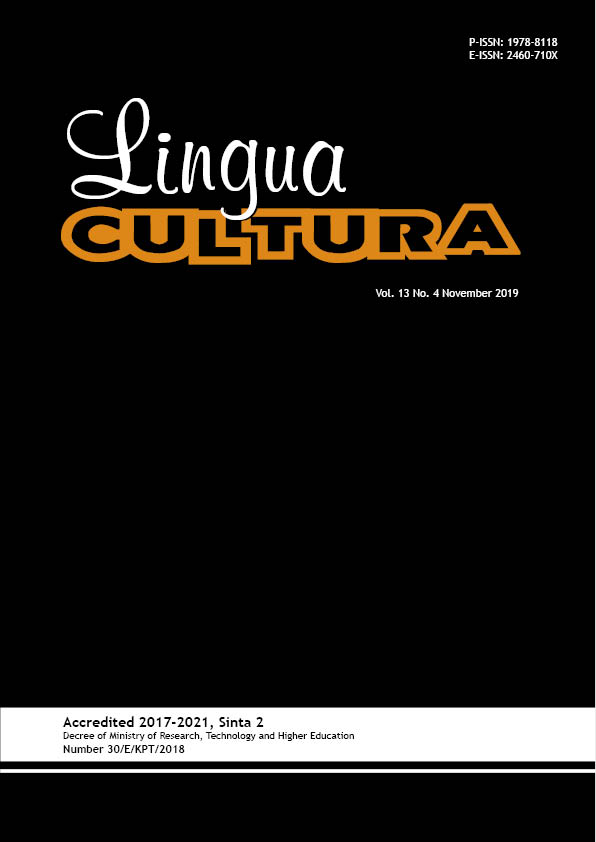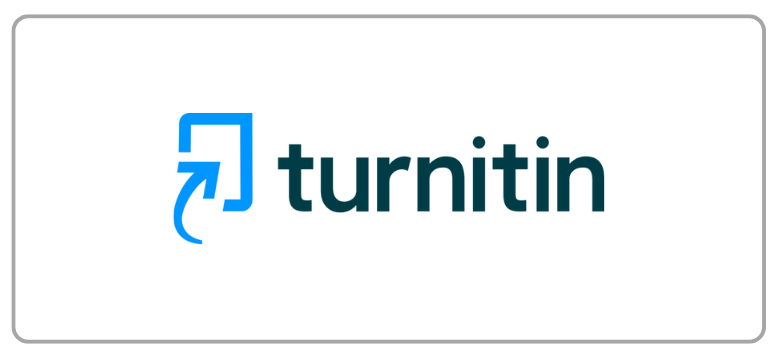The Impact of Higher Order Thinking Skills (HOTS) Instructions in Teaching EFL Speaking Skill from the Perspective of Students’ Motivation
DOI:
https://doi.org/10.21512/lc.v13i4.6105Keywords:
EFL, HOTS, LOTS, speaking skills, student motivationAbstract
The purpose of the research was to examine (1) whether or not the HOTS instruction was more effective than the LOTS (Lower Order Thinking Skills) instruction in teaching speaking for daily context to the first semester students at English Education department; (2) whether the students who had high self-motivation had better speaking ability than those who had low self-motivation; and (3) whether there was an interaction between teaching strategies and students’ self-motivation. By using a quantitative research with the quasi-experimental type, the data were derived from tests and questionnaires. The results show that (1) HOTS instruction is more effective than the LOTS instruction in teaching speaking for daily context to the first semester students at the English Education Department; (2) the students who have high motivation have better speaking skills than the students who have low motivation; (3) there is an interaction between teaching strategies and motivation in teaching speaking for daily context. It can be concluded that HOTS instruction is an effective strategy in teaching speaking viewed from students’ motivation. The effectiveness of the strategy is affected by students’ motivation.
References
Ahmad, S., Prahmana, P. C., Kenedi, A. K., Helsa, Y., Arianil, Y., & Zainil, M. (2017). The instruments of higher order thinking skills. Journal of Physics: Conference Series, 943(1), 1–8. https://doi.org/10.1088/1742-6596/943/1/012053.
Anasy, Z. (2016). HOTS (Higher Order Thinking Skill) in reading exercise. TARBIYA: Journal of Education in Muslim Society, 3(1), 51–63. https://doi.org/10.15408/tjems.v3i1.3886.
Arbain, A., & Nur, D. R. (2017). Techniques for teaching speaking skill in Widya Gama Mahakam University. Script Journal: Journal of Linguistic and English Teaching, 2(1), 13-25. https://doi.org/10.24903/sj.v2i1.80.
Arum, N. A. S., Sudarmi, M., & Pattiserlihun, A. (2019). Pemanfaatan film kartun “Larva†sebagai media belajar lewat kesalahan untuk mengajarkan HOTS kepada siswa pada materi dispersi cahaya. Paedagoria, 10(1), 40–51.
Astuti, F. N., Suranto, S., & Masykuri, M. (2019). Augmented reality for teaching science: Students’ problem solving skill, motivation, and learning outcomes. Jurnal Pendidikan Biologi Indonesia, 5(2), 305-312. https://doi.org/10.22219/jpbi.v5i2.8455.
Baguma, R., Bagarukayo, E., Namubiru, P., Brown, C., & Mayisela, T. (2019). Using WhatsApp in teaching to develop Higher Order Thinking Skills - A literature review using the activity theory lens. International Journal of Education and Development Using Information and Communication Technology, 15(2), 98–116.
Bakar, R. (2014). The effect of learrning motivation on students productive competencies in vocational high school, West Sumatra. International Journal of Asian Social Science, 4(6), 2226–5139. https://doi.org/2224-4441.
Baron, R. A., & Donn, B. (2000). Social psychology (9th Ed.). USA: Allyn & Bacon.
Budiman, A., & Jailani, J. (2014). Pengembangan instrumen asesmen Higher Order Thinking Skill (HOTS) pada mata pelajaran Matematika SMP kelas VIII semester 1. Jurnal Riset Pendidikan Matematika, 1(2), 139–151. https://doi.org/10.21831/jrpm.v1i2.2671.
Buijs, M., & Admiraal, W. (2013). Homework assignments to enhance student engagement in secondary education. European Journal of Psychology of Education, 28(3), 767–779. https://doi.org/10.1007/s10212-012-0139-0.
Chun, T. C., & Yen, M. (2019). The teaching of Higher Order Thinking Skills (HOTS) in Malaysian schools: Policy and practices. Malaysian Online Journal of Educational Management (MOJEM), 7(3), 1–18.
Driana, E., & Ernawati. (2019). Teachers’ understanding and practices in assessing Higher Order Thinking Skills ad primary schools. Acitya: Journal of Teaching & Education, 1(2), 110–118.
Fanani, M. Z. (2018). Strategi pengembangan soal HOTS pada kurikulum 2013. Edudeena: Journal of Islamic Religious Education, 2(1), 57-76. https://doi.org/10.30762/ed.v2i1.582.
Hamdi, S., Suganda, I. A., & Hayati, N. (2018). Developing Higher Order Thinking Skill (HOTS) test instrument using Lombok local cultures as contexts for junior secondary school mathematics. Research and Evaluation in Education, 4(2), 126–135. https://doi.org/10.21831/reid.v4i2.22089.
Hasan, A., & Pardjono. (2019). The correlation of higher order thinking skills and work readiness of vocational high school students. Jurnal Pendidikan Teknologi dan Kejuruan, 25(1), 52–61. doi: https://doi.org/10.21831/jptk.v25i1.19118.
Jerome, C., Lee, J. A. C., & Ting, S. H. (2017). What students really need: Instructional strategies that enhance Higher Order Thinking Skills (HOTS) among unimas undergraduates. International Journal of Business and Society, 18(4), 661–668.
Julianingsih, S., Rosidin, U., & Wahyudi, I. (2017). Pengembangan instrumen asesmen HOTS untuk mengukur dimensi pengetahuan IPA siswa di SMP. Jurnal Pembelajaran Fisika, 5(1), 59–68.
Leong, L. M., & Ahmadi, S. M. (2017). An analysis of factors influencing learners’ English speaking skill. International Journal of Research in English Education, 2(1), 34–41. https://doi.org/10.18869/acadpub.ijree.2.1.34.
Mulyaningsih, I., & Itaristanti. (2018). Pembelajaran bermuatan HOTS (Higher Order Thinking Skill) di jurusan Tadris Bahasa Indonesia. Indonesian Language Education and Literature, 4(1), 114–128. https://doi.org/10.24235/ileal.v4i1.2970.
Musfiqi, S., & Jailani. (2014). Pengembangan bahan ajar Matematika yang berorientasi pada karakter dan Higher Order Thinking Skill (HOTS). Pythagoras, 9(1), 45–59. doi: 10.21831/pg.v14i2.25034.
Nair, S. M., Wider, W., & Yan, Z. (2019). Analysis of ESL students
comprehension of LOTS and HOTS questions according to gender. Humanities and Social Sciences Letters, 7(2), 74–89. https://doi.org/10.18488/journal.73.2019.72.74.89.
Nguyễn, T. M. T., & Nguyễn, T. T. L. (2017). Influence of explicit higher-order thinking skills instruction on students’ learning of linguistics. Thinking Skills and Creativity, 26, 113–127. https://doi.org/10.1016/j.tsc.2017.10.004.
Nisa, C., & Retnawati, H. (2018). Comparing the methods of vertical equating for the math learning achievement tests for junior high school students. Research and Evaluation in Education, 4(2), 164–174. https://doi.org/10.21831/reid.v4i2.19291.
Noprinda, C. T., & Soleh, S. M. (2019). Pengembangan Lembar Kerja Peserta Didik (LKPD) berbasis Higher Order Thinking Skill ( HOTS ). Indonesian Journal of Science and Mathematics Education, 2(2), 168–176.
Nourdad, N., Masoudi, S., & Rahimali, P. (2018). The effect of Higher Order Thinking Skill instruction on EFL reading ability. International Journal of Applied Linguistics and English Literature, 7(3), 231–237. https://doi.org/10.7575/aiac.ijalel.v.7n.3p.231.
Nur, F. (2017). Pengembangan bahan ajar Matematika kelas VII SMP berdasarkan model pembelajaran Kolb-Knisley berbantuan Geogebra sebagai upaya meningkatkan Higher-Order Thinking Skill dan apresiasi siswa terhadap Matematika. MaPan, 5(1), 96–109. https://doi.org/10.24252/mapan.2017v5n1a7
Raquela, A., & Rini, J. E. (2016). Cognitive domains found on speaking skill questions used In English language textbook. Kata Kita, 4(1), 38–42. https://doi.org/10.9744/KATAKITA.4.1.38-42.
Retnawati, H., Djidu, H., Kartianom., Apino, E., & Anazifa, R. D. (2018). Teachers’ knowledge about higher-order thinking skills and its learning strategy. Problems of Education in the 21st Century, 76(2), 215–230.
Rosli, M. F. M., & Maarof, N. (2017). The effects of Higher Order Thinking Skills (HOTS) questions in improving ESL pupils’ writing performance. Retrieved from https://www.academia.edu/32421863/THE_EFFECTS_OF_HIGHER_ORDER_THINKING_SKILLS_HOTS_QUESTIONS_IN_IMPROVING_ESL_PUPILS_WRITING_PERFORMANCE.
Shidiq, A. S., Masykuri, M., & Susanti, E. (2015). Analisis Higher Order Thinking Skills (HOTS) menggunakan instrumen two-tier multiple choice pada materi kelarutan dan hasil kali kelarutan untuk siswa kelas XI SMA N 1 Surakarta. Prosiding Seminar Nasional Pendidikan Sains. (pp. 2015–2159). Retrieved from http://jurnal.fkip.uns.ac.id/index.php/snps/article/view/7972/5813.
Siti N. M. (2015). Teachers’ perception on the integration of HOTS in language teaching. International Journal of Technical Research and Applications, 22(22), 42–44.
Suryamiati, W., Pasah, A., & Eka, A. (2019). Improving higher-order thinking skill through POE ( Predict , Observe , Explain ) and guided discovery learning models. 5(2), 245–252. https://doi.org/10.22219/jpbi.v5i2.8266.
Shyamala, R. M. (2015). HOTS in writing skills in the classroom among students in a secondary school in Seremban, Malaysia. Seminar Penyelidikan Pendidikan Kebangsaan (APPK). Kuala Lumpur, Malaysia. pp 9–24.
Tanujaya, B., Mumu, J., & Margono, G. (2017). The relationship between higher order thinking skills and academic performance of student in Mathematics instruction. International Education Studies, 10(11), 78-85. https://doi.org/10.5539/ies.v10n11p78.
Taurina, Z. (2015). Students’ motivation and learning outcomes: Significant factors in internal study quality assurance system. International Journal for Cross-Disciplinary Subjects in Education (IJCDSE), 5(4), 2625–2630.
Tikhonova, E., & Kudinova, N. (2015). Sophisticated thinking: Higher order thinking skills. Journal of Language & Education, 1(3), 12–23.
Tohidi, H., & Jabbari, M. M. (2012). The effects of motivation in education. Procedia - Social and Behavioral Sciences, 31, 820–824. https://doi.org/10.1016/j.sbspro.2011.12.148.
Toyoda, E. (2016). Relationship between higher order thinking skills and L2 performance. Electronic Journal of Foreign Language Teaching, 12(2), 200–218.
Wahid, A. H., & Karimah, R. A. (2018). Integrasi Higher Order Thinking Skill (HOTS) dengan model creative problem solving. Modeling: Jurnal Program Studi PGMI, 5(1), 82–98.
Widodo, T., & Kadarwati, S. (2013). Problem solving based higher order thinking to improve learning achievement through students’ character building orientation. Cakrawala Pendidikan, 32(1), 161–171. doi: 10.21831/cp.v5i1.1269.
Zulfin, R., Shofiatun, N., Helmi, A., Al Jupri. (2018). Implementasi model pembelajaran Sains Teknologi Masyarakat (STM) untuk mengembangkan High Order Thinking Skills (HOTS) siswa kelas IV SD Ar-Rahman Darul Ilmi Bandung. Edutech, 17(3), 332–350. doi: https://doi.org/10.17509/e.v17i3.14342.
Downloads
Published
How to Cite
Issue
Section
License
Authors who publish with this journal agree to the following terms:
a. Authors retain copyright and grant the journal right of first publication with the work simultaneously licensed under a Creative Commons Attribution License - Share Alike that allows others to share the work with an acknowledgment of the work's authorship and initial publication in this journal.
b. Authors are able to enter into separate, additional contractual arrangements for the non-exclusive distribution of the journal's published version of the work (e.g., post it to an institutional repository or publish it in a book), with an acknowledgment of its initial publication in this journal.
c. Authors are permitted and encouraged to post their work online (e.g., in institutional repositories or on their website) prior to and during the submission process, as it can lead to productive exchanges, as well as earlier and greater citation of published work.
USER RIGHTS
All articles published Open Access will be immediately and permanently free for everyone to read and download. We are continuously working with our author communities to select the best choice of license options, currently being defined for this journal as follows: Creative Commons Attribution-Share Alike (CC BY-SA)


















